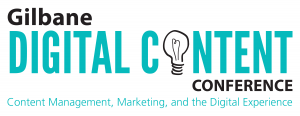Happy New Year!
We’ve been busy with December’s Gilbane Conference and the holidays, so to get caught up and keep this issue a reasonable size we have collected conference content in a separate blog post, and included a larger Short Takes section below.
16 Mobile Theses
Benedict Evans summarizes his view of fundamental issues at the intersection of mobile and computing. There are links to more detailed analysis which should be read to fully understand his position.
We’re now coming up to 9 years since the launch of the iPhone kicked off the smartphone revolution, and some of the first phases are over – Apple and Google both won the platform war, mostly, Facebook made the transition, mostly, and it’s now perfectly clear that mobile is the future of technology and of the internet. But within that, there’s a huge range of different themes and issues, many of which are still pretty unsettled. Read More
and see…
Contextual Runtimes
Fred Wilson on Evans’ 16 mobile theses…
… my favorite part is titled “Post Netscape, post PageRank, looking for the next run-time.” In this part Ben describes what used to be the dominant environment and the search for what is next. At the end he states: “Really, we’re looking for a new run-time – a new way, after the web and native apps, to build services. That might be Siri or Now or messaging or maps or notifications or something else again.” … I agree with Ben but I think there won’t be one runtime in the mobile era. I think what is emerging is multiple runtimes depending on the context – “contextual runtimes.”
Fred is right, and further, some runtimes will be open and some closed. This tension between “open” and “closed” has been a constant of computing systems and standards for decades and has fed creative development of both. Context determines the leverage of “open” or “closed” and is fluid. Read More
and see…
Mobile Counter-theses
Tim Bray on Evans’ 16 theses…
I think the theses are about half wrong. … I’ll run through his theses one-by-one. But first, I think our differences center on two things; one that’s predictable given who I am, namely the cloud. The second is perhaps surprising: Whether keyboards matter.
After trying to come up with my own tally of who was more correct, I would go further than Tim and say that their backgrounds account for a lot of the apparent difference. At the risk of over-simplifying, Benedict is an analyst from the telecom market which now includes client computing products, and Tim is a developer with deep involvement in web, mobile and enterprise systems. In any case, you’ll want to read what both have to say. Read More
Rating the Crowd-Sourced Marketing Software Review Sites
What began as a whimsical “landscape of landscapes” led me to realize crowd-sourced review sites are the most common type of vendor directory, accounting for 15 of the 23 sources listed in my original graphic. This begged for a deeper look at the review sites to understand how they differ which, if any, could replace the work of professional reviewers (like me)…
Marketing technology consultant and analyst David Rabb helpfully checks out his crowd-sorting competition and happily finds a role for experts like himself and crowd-sourced reviews. Read More
Is Facebook Driving Less Traffic to Publishers’ Sites?
Recent data from content measurement firm SimpleReach… said Facebook referral traffic to a group of 30 publishers’ sites dropped 32% between January and October… The 30 sites analyzed were those in SimpleReach’s network deemed most reliant on Facebook for their traffic… But online analytics firm Chartbeat… aggregated information from 100 “major news and media” sites … found Facebook referral traffic remained relatively consistent between January and October.
A third firm saw a slight increase in Facebook referral traffic in the same time frame.It seems it depends who you ask. We’ll be learning more in 2016. Read More
“Why not be all the way in?” How publishers are using Facebook Instant Articles
The quote above is from the enthusiastic Washington Post, who doesn’t seem to need any help with the speed of its site these days. Read More
You can also see what some other publishers, including the New York Times and Harvard Business Review think about Instant Articles in the video of the recent Gilbane conference session on New Frontiers in Digital Content Distribution.
Why Facebook Still Worries About Android
Yes, even Facebook has platform fear. The Information’s Amir Efrati reports…
This summer, conversations between Google and Facebook sparked concern at the social media company. The issue: whether Google would eventually ask Facebook to pay for various app requests made by Facebook users on Android smartphones. … These app requests included Google Maps information viewed within the Facebook app and app-related push notifications to be delivered to the phone. Google’s servers handle such app requests before they are passed on to the network provider and end up on an Android phone. … Google doesn’t charge mobile app developers for such standard services. But on Android, Facebook is the top user of such API calls, … And handling those calls costs Google money. Read More
What is Facebook doing about it? Lots…
Facebook’s Android Contingency Planning
Facebook has been secretly preparing contingency measures to allow its apps to operate on Android phones without going through Google’s app store, … Facebook’s goal is to be ready in case it has an intractable conflict with Google … over future rules governing how apps can function on Android. Read More
Short takes
Summary with handy links… Gartner, IDC and Forrester on the Future of Digital Transformation via What’s The Big Data?
Insight on AMP in interview with Richard Gingras… Inside Google’s plan to speed up the mobile Web via Poynter
2016 predictions for mobile marketing, by a newly discovered business-savvy developer via Mobile Dev Memo
The management tool everyone has been waiting for?… Introducing Guesstimate, a Spreadsheet for Things That Aren’t Certain via Medium
You need to read to understand why a post with such a title actually delivers. How to get rich in tech, guaranteed. via Startups and Shit
Biting, funny, and true… How to Swallow $200 Million Accidentally via Medium
Slippery slope… 350 Words — Ad — 150 Words via Medium
Why is social media failing? Because The Consumer isn’t a Moron, at least in general. via Medium
Bet you didn’t know that Email Is the Best Way to Reach Millennials via HBR
Handy for getting started with some IoT market research… Internet of Things (IoT) Market Ecosystem Map via Medium
Hiring help… Identifying the essential skills for data scientists. Beyond the Venn diagram via oreilly.com
Digital Asset Management Round-Up, December 2015… SAP hybris / CELUM, Canto / inMotionNow, and some predictions for 2016 via Digital Clarity Group
Updating Our Search Quality Rating Guidelines includes a link to a major revision of Google’s rater guidelines. via Google Webmaster Central Blog
E-Commerce Round-Up: November 2015… Multichannel challenges at Macy’s, Nordstrom, Target, service provider ambitions at Zalando and Farfetch, and Mercadolibre growth. via Digital Clarity Group
CMS, etc. corner
WCM market share estimates… Web Content and Experience Management – Industry Maps via Real Story Group
What’s New for You This December in Open Source CMS… Liferay, Hippo, Typo3, Telerik, Enonic, dotCMS, eZ Systems, Jahia, Magnolia, Umbraco, Xoops… via CMSWire
What’s New This January in Open Source CMS… Composite C1, Enonic, Joomla, Hippo. via CMSWire
WordPress or No? WCMS – the WordPress problem as we have experienced it via diginomica
About
The Gilbane Advisor curates content for our conference community of content, computing, and digital experience professionals throughout the year. You can also subscribe via our feed.
The Gilbane Conference on Content, Technology, and Customer Experience helps marketers, IT, and business managers integrate content strategies and computing technologies to produce superior customer experiences for all stakeholders.







